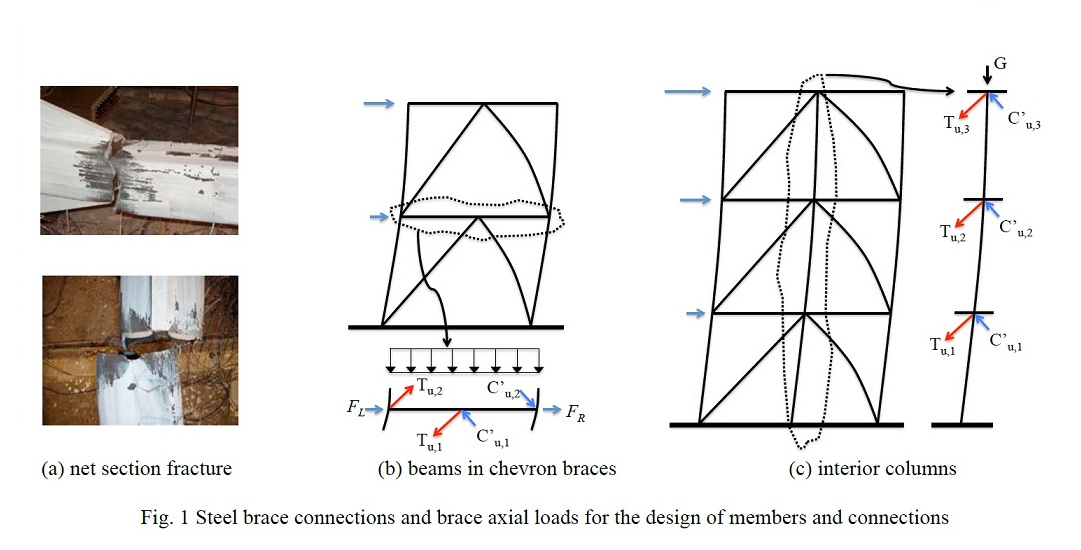2013
Dr. Dimitrios Lignos
Department of Civil Engineering and Applied Mechanics, McGill University
Development of Ry, Rt Factors and Probable Brace Resistance Axial Loads for the Seismic Design of Bracing Connections and Other Members
In the CSA S16-09 limit state design approach, brace connections must be designed to resist brace axial loads that correspond to the probable (expected) buckling strength and tensile yielding of the steel braces. In order to ensure that within these elements, the desired ductile mode of yielding governs and other undesirable brittle failure modes are precluded from the “capacity design” methodology, the true strength of the yielding members is required. As a general requirement for brace connections subjected to seismic loading, current seismic provisions (CSA 2009, AISC 2010) require that brace connections must resist the maximum tension load that the brace member can attain when its gross cross sectional area (Ag) yields. This requires a reliable estimate of the Ry factor, which represents the ratio of expected yield stress to the specified minimum yield stress (Fy) of the steel material. In order to account for the shear lag phenomenon in typical brace connections and avoid connection failure by circumferential fracture (see Figure 1a) we need to enforce the steel brace net area (An) at the connection. Therefore, we need to have a reliable estimate of the Rt factor, which represents the ratio of expected tensile stress to the specified minimum tensile stress (Fu).
The focus of this research is on the development of Ry and Rt factors to better facilitate the seismic design requirements per CSA S16-09 for bracing connections. The research includes an extensive literature review related to the cyclic behaviour of steel braces and brace connections that have been tested worldwide, with emphasis on the ones that reflect seismic design criteria in accordance with S16-09. The current values of probable tensile resistance (Tu), probable compressive resistance (Cu) and post-buckling compressive resistance (C’u) of bracing members that are used for the purpose of evaluating forces on connections and other members upon yielding and buckling of the bracing members will also be re-assessed.
BIOGRAPHY
Dr. Dimitrios Lignos received his Diploma in Civil Engineering (2003) from the National Technical University of Athens (NTUA) and his M.Sc. (2004) and Ph.D. (2008) from Stanford University in California. He also worked as a Post-Doctoral Research Fellow at Stanford University (2009) and Kyoto University in Japan (2010) and as an Associate Professor at McGill University (2010-2015). Dr. Lignos’s research area involves integrated analytical and experimental research for the development of performance-based assessment techniques for seismic design and evaluation of steel structures. His research focuses on the collapse assessment of structural systems and the utilization of advanced technologies for seismic design and rehabilitation of conventional and high-performance structures. Dr. Lignos is currently an Associate Professor at École Polytechnique Féderale de Lausanne (EPFL), Switzerland.


